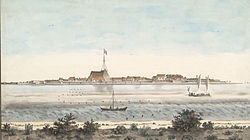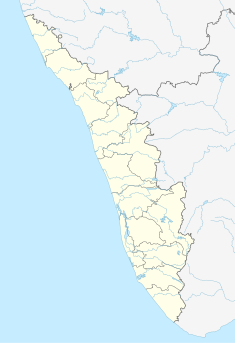History
In September 1503, the King of Kochi granted permission to Afonso de Albuquerque to build Fort Emmanuel near the waterfront of the Arabian Sea. The construction was commenced on 26 September, and "it took the shape of a square with flanking bastions at the corners mounted with ordnance". The walls were made of double rows of coconut tree stems securely fastened together and with earth rammed firmly between; it was further protected by a wet ditch. The fort was christened on the morning of 1 October 1503 "Emmanuel", after the King of Portugal. [3]
The fort was built at the water-bound region towards the south-west of the Kochi mainland. The fortifications were reinforced in 1538. [1] The Portuguese built their settlement behind the fort, including the St Francis Church. Fort Kochi remained in Portuguese possession until 1663, when the Dutch captured the territory and destroyed the Portuguese institutions. The Dutch held the fort in their possession until 1795, when the British took control by defeating the Dutch. By 1806 the Dutch, and later the British, had destroyed most of the fort walls and its bastions. [1]
In Old Kochi and alongside the Fort Kochi beach, there is a partially restored gun battery and other remains of ramparts and fortifications, which are now tourist destinations.
This page is based on this
Wikipedia article Text is available under the
CC BY-SA 4.0 license; additional terms may apply.
Images, videos and audio are available under their respective licenses.




